Potrebujeme váš súhlas na využitie jednotlivých dát, aby sa vám okrem iného mohli ukazovať informácie týkajúce sa vašich záujmov. Súhlas udelíte kliknutím na tlačidlo „OK“.
ASTM E2677-14
Standard Test Method for Determining Limits of Detection in Explosive Trace Detectors
Automaticky preložený názov:
Štandardná skúšobná metóda pre stanovenie medze detekcie vo výbušnom Trace detektory
NORMA vydaná dňa 1.2.2014
Informácie o norme:
Označenie normy: ASTM E2677-14
Poznámka: NEPLATNÁ
Dátum vydania normy: 1.2.2014
Kód tovaru: NS-45857
Počet strán: 8
Približná hmotnosť: 24 g (0.05 libier)
Krajina: Americká technická norma
Kategória: Technické normy ASTM
Kategórie - podobné normy:
Anotácia textu normy ASTM E2677-14 :
Keywords:
alarms, detection, explosives, limit of detection, LOD90, risks, screening, swabs, thresholds, trace, uncertainty, ICS Number Code 13.230 (Explosion protection)
Doplňujúce informácie
| Significance and Use | ||||||||||||||||||||||||
|
5.1 ETDs are used by first responders, security screeners, the military, and law enforcement to detect and identify explosive threats quickly. ETDs typically operate by detecting chemical agents in residues and particles sampled from surfaces and can have detection limits for some compounds extending below 1 ng. An ETD is set to alarm when its response to any target analyte exceeds a programmed threshold level for that analyte. Factory settings of such levels typically balance sensitivity and selectivity assuming standard operating and deployment conditions. 5.2 A LOD is commonly accepted as the smallest amount of a particular substance that can be reliably detected in a given type of medium by a specific measurement process 5.3 When deployed, individual ETD performance (for example, realistic LODs) is influenced by: (5.4 Technical Challenges and Pitfalls to the Determination of LOD Values in ETDs and the Setting of Optimal Alarm Thresholds: 5.4.1 Scope—There are over 230 explosive materials currently listed by the Bureau of Alcohol, Tobacco, Firearms, and Explosives.4 There are many technologies used for detection, and ETD manufacturers design their systems and balance operating conditions to provide detection capabilities across as many analytes as possible. However, a very limited subset of analytes is normally used to test and verify ETD performance. Therefore, default ETD operating conditions and alarm thresholds may not be optimally set to detect reliably certain compounds deemed important in particular scenarios. 5.4.2 Environment—Ambient conditions and chemical background vary with the deployment location, which would influence ETD response sensitivities and LOD values. 5.4.3 Risk Tolerance and Balance—Values of alpha risk (false positive probability of process blanks) and beta risk (false nondetection probability of analytes at the detection limit) should be balanced and set according to security priorities (for example, alert level, probable threat compounds, throughput requirements, human factors, and risk tolerance). The default risk balance in an ETD may not be adequate for the deployment situation. 5.4.4 Signal Variability (Heteroscedasticity)—The variance in instrument response may not be consistent across analyte mass levels introduced into the ETD. In ion mobility spectrometry (IMS)-based technologies, the physicochemical mechanisms underlying atmospheric pressure ionization (with a finite number of available reactant ions) and ion mobility separation may be non-uniform across the ETD response regions. Typical methods of LOD determination usually assume constant variance. 5.4.5 Proprietary Signal Processing—Typical LOD determinations assume Gaussian distributions and use background variation as an important parameter. Unfortunately, alarm decisions in ETDs are rarely based on raw measurement signals; rather, proprietary algorithms are used to process the raw measurements. This processing may attempt to minimize alpha risk by truncating or dampening background signals, so background signals may be absent or the true distribution in these processed signals may be non-Gaussian, confounding the calculation of an accurate LOD. 5.4.6 Multivariate Considerations—To improve selectivity and decrease alpha risk, alarm decisions in ETDs may be based on multiple-peak responses rather than a single-peak amplitude measurement. Additionally, efforts to recognize and quantify unique ion fragmentation patterns across both the thermal desorption and drift-time domains are being developed for next-generation detectors. 5.4.7 Diversity of Technologies—The wide variety of ETDs on the market and those under development challenge general response models for accurate estimation of LOD. 5.4.8 Security—LOD values for explosives in ETDs cannot be openly published because of security and classification issues. |
||||||||||||||||||||||||
| 1. Scope | ||||||||||||||||||||||||
|
1.1 In harmony with the Joint Committee for Guides in Metrology (JCGM) and detection concepts of the International Union of Pure and Applied Chemistry (IUPAC) 1.2 Here, the limit of detection (LOD90) is defined to be the lowest mass of a particular compound deposited on a sampling swab for which there is 90 % confidence that a single measurement in a particular ETD will have a true detection probability of at least 90 % and a true nondetection probability of at least 90 % when measuring a process blank sample. 1.3 This particular test method was chosen on the basis of reliability, practicability, and comprehensiveness across tested ETDs, analytes, and deployment conditions. The calculations involved in this test method are published elsewhere 1.4 Intended Users—ETD developers, ETD vendors, ETD buyers, ETD testers, ETD users (first responders, security screeners, and the military), and agencies responsible for public safety and enabling effective deterrents to terrorism. 1.5 While this test method may be applied to any detection technology that produces numerical output, the procedures have been designed for ion mobility spectrometry (IMS) based ETD systems and tested with low vapor pressure explosive compounds. Compounds are deposited as liquid solutions on swabs and dried before use. As some swabs are absorbent, this deposition procedure may not be optimal for those ETD technologies that rely on high coverage of analyte on the surface of the swab. Background interferences introduced to the test samples were representative of a variety of conditions expected during deployment, but these conditions were not intended as comprehensive in representing all possible scenarios. The user should be aware of the possibility that untested scenarios may lead to failure in the determination of a reliable LOD90 value. 1.6 Units—The values stated in SI units are to be regarded as the standard. No other units of measurement are included in this standard. 1.7 This standard does not purport to address all of the safety concerns, if any, associated with its use. It is the responsibility of the user of this standard to establish appropriate safety and health practices and determine the applicability of regulatory limitations prior to use. Some specific hazards statements are given in Section 8 on Hazards. |
||||||||||||||||||||||||
| 2. Referenced Documents | ||||||||||||||||||||||||
|
Podobné normy:
Historická
15.2.2012
Historická
1.7.2011
Historická
1.6.2013
Historická
1.4.2008
Historická
1.10.2009
Historická
1.5.2013
Odporúčame:
Aktualizácia technických noriem
Chcete mať istotu, že používate len platné technické normy?
Ponúkame Vám riešenie, ktoré Vám zaistí mesačný prehľad o aktuálnosti noriem, ktoré používate.
Chcete vedieť viac informácií ? Pozrite sa na túto stránku.


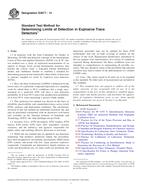
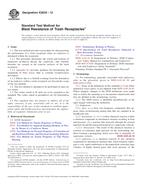 ASTM E2639-12
ASTM E2639-12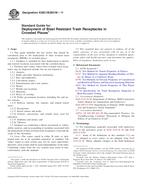 ASTM E2831/E2831M-11..
ASTM E2831/E2831M-11..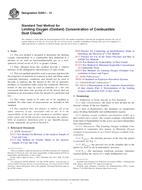 ASTM E2931-13
ASTM E2931-13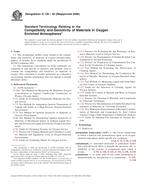 ASTM G126-00(2008)..
ASTM G126-00(2008)..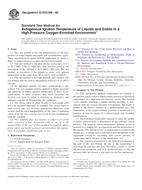 ASTM G72/G72M-09..
ASTM G72/G72M-09..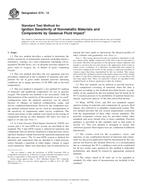 ASTM G74-13
ASTM G74-13
 Cookies
Cookies
